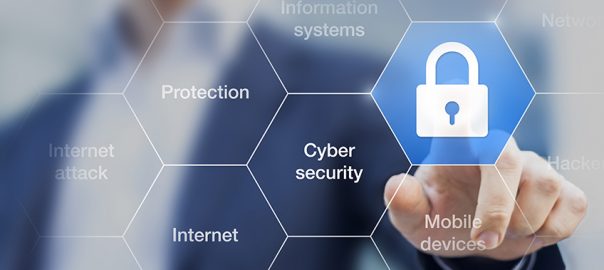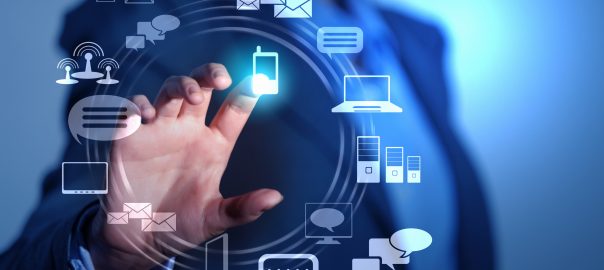The Brexit outcome to the UK’s referendum on EU membership has no immediate effect on intellectual property in the UK – EU laws remain (pun not intended) in effect until such time as Article 50 notification is made by the UK and the consequent 2 year negotiation period ends (unless extended by agreement of the other 27 member states).
During the negotiation process, the UK will remain part of the EU. To ensure an orderly transfer to a post-Brexit regime, transitional provisions will likely be put in place to ensure no loss of IP rights once Brexit takes effect. It is clear however that preparation, portfolio reviews and establishing appropriate strategies in the coming months and during the run-up to Brexit will be key to a successful IP transition. The preliminary analysis below, written by Abida Chaudri, Solicitor at Arc IP, and Dr Julian M Potter, Partner & Stuart Forrest, Senior Associate, at WP Thompson Intellectual Property, sets out some of the issues at this early stage.
Trade Marks – No Immediate Changes
UK trade mark registrations, whether obtained via the national route or by means of the Madrid Protocol International Registration system, will not be affected by Brexit.
Post-Brexit and if the UK does not become a member of the EEA, European Union trade marks (EUTMs) will not cover the UK and national UK applications (or International Registrations designating the UK) will be necessary.
EUTMs in force as at the date of Brexit will inevitably be affected, again assuming the UK does not become a member of the EEA. Currently, EUTMs cover the 28 EU member states as a single unitary right. On Brexit, EUTMs will no longer cover the UK but will continue to subsist in the remaining 27 member states and be governed by EU law. Transitional provisions will very likely be enacted by the UK government allowing EUTMs to take effect as national rights in the UK. The mechanism by which this would occur has not yet been identified but could be one of the following:
- a) Conversion of EUTMs into national registrations
It is already possible to convert EUTMs into national applications in any of the EU member states but this arises by virtue of EU legislation. Converted applications retain the original filing and priority dates and seniority claims of the EUTMs from which they derive. Fees are payable both to the EU intellectual Property Office (EUIPO) and, for UK conversions, to the UK IP Office (UKIPO). EU legislation states that converted marks are not to be subject to any additional or different requirements of national law – which means that, in the UK certainly, converted EUTMs are treated in the same way as national applications and (re-)examined, published and open to opposition. On the plus side, registration in the UK then results in a new 5 year grace period to commence genuine use.
Conversion of EUTMs into national UK marks to address Brexit will require new UK legislation and need to consider, for example : whether a conversion fee will be payable to the UKIPO; if re-examination and opposition periods will occur; if the current requirement for all UK applications (including converted EUTMs) to declare that the mark is in use or there is a genuine intention to use in the UK should be maintained – especially for converted EUTMs over 5 years old that have not been used in the UK; whether use of converted EUTMs pre-conversion in any of the remaining EU countries will count as use in the UK especially where they are over 5 years old and so would otherwise be vulnerable to non-use revocation in the UK.
- b) Re-registration of EUTMs in the UK
This is distinct from conversion but will, again, require UK legislation. EUTMs could potentially be re-registered as UK registrations in the same straightforward way that UK registrations can be re-registered in Jersey. Or there could be a system similar to that adopted on the breakup of Yugoslavia – so for example, Serbian trade marks were automatically extended to Montenegro in May 2008 without re-registation or payment of additional fees up until their renewal dates but new trade mark laws in 2010 required re-registration within 12 months. A similar scenario for EUTMs in the UK post-Brexit is possible, perhaps with some method of easily denoting the re-registered marks.
The position of UK registrations which were used to claim seniority for EUTMs but were then allowed to lapse may be challenging. Seniority claims based on UK registrations will lapse on Brexit but it is debatable whether the UK would enact legislation allowing those national registrations to be restored so as to prevent loss of rights once EUTMs no longer extend to the UK.
Brexit will also lead to the loss of the UK’s EU Trade Mark Courts and the UK will not then be able to grant (or be subject to) EU-wide injunctions. Whether EU-wide injunctions granted by UK-based EU Trade Mark Courts would remain enforceable post-Brexit is not clear.
Since the UK would no longer be bound by decisions of the EU’s General Court, UK trade mark law (albeit EU-based unless amended) could well diverge over time, especially given its common law roots.
Designs – No Immediate Changes
Registered Community Designs (RCDs) are unitary rights covering all 28 EU member states and, like EUTMs, will no longer cover the UK post-Brexit. As for EUTMs in force on Brexit, a conversion or re-registration system for the UK is anticipated. The UK has its own design registration system (and UKIPO fees have recently reduced) but there may perhaps be increased interest in the Hague International Design System which operates similarly to the Madrid International Trade Mark regime, providing national registrations in multiple countries through a centralised application process.
Unregistered Community Design Rights may not be protected in the UK post-Brexit since the UK has its own system for unregistered designs.
Patents – No Change to Current Arrangements
The mechanisms for obtaining patent protection in both the UK and Europe will not be affected by Brexit. It will still be possible to apply for patents via the national route and at the European Patent Organisation (EPO).
The EPO is not an EU institution, and the European Patent Convention (EPC) is a separate international agreement that sets up the European Patent Organisation and the EPO.
The member states of the EPO already include several countries that are not member states of the EU, such as Switzerland, Iceland, Norway and Turkey. It is for this reason that Brexit will not have any impact on the UK’s membership of the EPO, and the ability of applicants to obtain European patents via the EPO that are effective in the UK.
UK Patents and pending European patent applications
UK Patents will not be affected by Brexit, whether they have been obtained via the national route or from validation of a European patent granted by the EPO.
European patent applications that are pending at the EPO will continue to designate the UK. Once granted, the European patent can then be validated in the UK regardless of Brexit.
What about the Unitary Patent and the Unified Patent Court?
The patent landscape in Europe is due to change in the future with the introduction of European patents with unitary effect (“Unitary Patents”), which will present a further route by which applicants can obtain patent protection in Europe when (and indeed if) it is brought into effect. The predicted implementation date of the Unitary Patent was sometime in 2017, but that is likely to be delayed since the UK is currently one of the three states that needs to ratify the treaty.
Unitary effect of a European patent, which leads to a Unitary Patent, can be requested following grant of the European patent. A Unitary Patent will have effect in the participating member states of the EU, i.e. not necessarily all the member states of the EU (for example, Croatia, Poland and Spain are not participating at the time of writing). If the UK leaves the EU, then it may not be able to participate in the Unitary Patent, and the associated Unified Patent Court. Several proposals have, however, been discussed that would enable the UK to do so following Brexit.
If the UK does not participate in the Unitary Patent following Brexit, then a Unitary Patent will not extend to the UK. Protection in the UK will have to be obtained through the routes that currently exist, i.e. the national route or from validation of a European patent granted by the EPO.
The Unified Patent Court (UPC) is a proposed common patent court open for participation of all member states of the European Union. The UK has been allocated one of the divisions of the UPC central court and it is expected that this will be lost to an EU member state in light of Brexit. If the UK is not able to participate in the Unified Patent Court, then the Court will not have jurisdiction over European patents validated in the UK. However, only 13 member states of the EU need to ratify the Unified Patent Court agreement in order for it to come into force, so the Court might not have jurisdiction over more than half of the member states of the EU anyway – possibly not such a significant jurisdiction regardless of the UK’s participation or not.
It might be the case that businesses in the UK, or businesses who are contemplating setting up in the UK, think that it would be desirable for the UK not to be within the jurisdiction of the Unified Patent Court. For example, UK based business might derive benefit from the knowledge that they will not be at risk of being the subject of an injunction that has effect in all of the member states participating in the Unified Patent Court agreement, i.e. potentially a pan-EU injunction.
To reiterate, the Unified Patent Court will not have any jurisdiction over national patents. This remains the case, even for states that are participating in the Unitary Patent and the associated Unified Patent Court.
Patent term extensions – Supplementary Protection Certificates (SPCs)
A rather niche practice in Europe has developed around SPCs, which are available for various regulated, biologically active agents, namely human or veterinary medicaments and plant protection products.
SPCs are currently granted under an EU regulation, which will no longer apply after Brexit. Similarly, extensions of the term of SPCs (following paediatric studies) are also granted under an EU regulation. There will, therefore, need to be new legislation in the UK in order to create rights that are equivalent to SPCs.
Copyright
There is no system for registration of copyright either on an EU-wide basis or nationally in the UK. Accordingly, UK laws will continue to apply, as will the UK’s membership of the Berne Convention, the Universal Copyright Convention and the WIPO Copyright treaty.
Geographical Indications and Designations of Origin
These are protected by an EU-wide regime – examples are Yorkshire Wensleydale cheese (geographical indication) and Stilton blue cheese (designation of origin). A national system of protection is anticipated post-Brexit, with the mechanism for achieving this to be established. There may also be a bilateral agreement with the EU for reciprocal protection.
Trade Secrets
The UK may not implement the EU Trade Secrets Directive of 5 July 2016 – EU member states have 2 years from this date to incorporate its terms into national law but if Brexit occurs before the 5 July 2018 deadline, then this will not be necessary. The UK may enact its own trade secrets legislation, perhaps based on the Directive, but since the UK has indicated that its law is already compliant with the Directive no change is likely.
Database Rights
These came into being in the UK on 1 January 1988 by virtue of EU legislation – The Copyright and Databases Regulations 1997. Post-Brexit, databases created in the UK would not be protected unless the UK were to become a member of the EEA.
.eu Domains
These can only be registered by businesses established in or individuals who are residents of EEA countries – so if the UK does not become an EEA member, UK-based businesses and UK residents will need to look at registering, and using, alternative domains.
Agreements
Where “Europe” is the territory covered by agreements such as licences of IP rights or co-existence agreements, this may be stated in a number of ways – for example: Europe, or the EU, or the EU as constituted at the date of the agreement or as constituted from time to time. Terms within agreements may also reference “Europe” in various ways. Whether or not the UK is included in each of these definitions of Europe will be a matter for assessment on a case by case basis, with appropriate variations even if the intention was clearly to cover the UK.
Exhaustion of Rights
Currently, IP rights attaching to goods in circulation in the EEA (EU, Norway, Leichtenstein and Iceland) by or with the consent of the IP rights holder are “exhausted” and further free movement within the EEA cannot be prevented (subject to limited exceptions such as changes to the condition of the goods). If the UK does not become a member of the EEA post-Brexit, it could be that exhaustion of rights will apply to the UK only so that goods entering from the remaining EU countries would infringe UK rights.
What should businesses do to prepare for Brexit?
Whilst not directly related to Brexit but important for EUTMs and converted / re-registered UK trade marks pre and post-Brexit : For EUTMS filed before 22 June 2012, review and if appropriate file Declarations at the EUIPO before the 24th September 2016 deadline stating that the intention on filing was to seek protection for goods / services beyond those falling within the literal meaning of any class headings covered by the EUTM. The scope for filing such declarations is greater, and more complicated, than appears at first sight and whilst there are qualifications, declarations that are accepted by the EUIPO will essentially extend the goods / services beyond those originally registered.
Review your current IP portfolio, decide which EUTMs and RCDs you will wish to convert to or re-register as national UK rights and budget for conversion / re-registration and subsequent renewal costs.
Review your filing strategy for EUTMs going forward and consider filing UK trade mark and design applications alongside EUTMs and RCDs if the UK is a key market.
Do not surrender any UK trade mark registrations which form the basis of seniority claims for EUTMs and ensure that the former are maintained since they will have earlier filing dates than EUTMs which are converted / re-registered as UK trade marks on Brexit.
Where current EUTMs have not been used in the UK (but are used in other EU countries) and where it is commercially appropriate to do so, take steps to establish genuine use (for the purpose of creating a market) in the UK pre-Brexit; also bear this in mind for EUTM and UK trade mark applications going forward.
Review agreements relating to IP and establish if they apply to the EU as at the date the agreements came into force or to the EU as constituted from time to time; either way, it may be necessary to vary the agreements so they apply specifically to the UK, even if the intention was clearly to cover the UK. Post-Brexit, the UK should be referenced separately to the EU.
Be aware of your, and legal representatives’, rights of representation for EUTMs and RCDs. Currently, representatives (for EUTMs) must be based in the EEA, be legal practitioners qualified to act as representatives in one of the EEA countries and have a place of business within the EEA. If the UK is an EEA member post-Brexit, then all well and good but if not, it is highly likely that representatives will maintain their rights of representation at the EUIPO by other possible means.
Monitor developments on Brexit so that all necessary actions can be taken, and appropriate resources devoted, in a timely manner.
Remember that there are no immediate changes and there will be a 2 year period to transition IP before Brexit actually takes effect. Forward planning however is key.
Authors: Abida Chaudri, Solicitor, Registered Trade Mark & Design Attorney (UK & EU) and Director, ARC IP; Dr Julian M Potter, Partner & Stuart Forrest, Senior Associate, WP Thompson Intellectual Property
Abida Chaudri is an experienced solicitor and registered UK and European trade mark & design attorney with a background in both private practice and industry. She has broad experience and handles all aspects of trade marks, designs and soft IP, contested, non-contentious, and advisory with particular emphasis on strategy. She is a widely published author of numerous articles on IP issues and chair of the International Trademark Association’s Indigenous Rights Policy & Analysis Sub-Committee.
Dr Julian M Potter is a Chambers recognised tier one UK & European Patent Attorney and Intellectual Property litigator. His practice encompasses all physics based disciplines and he has wide experience of drafting and prosecuting patents for the UKIPO, the EPO and patent offices throughout the world. Julian also represents clients in contentious matters such as oppositions and appeals and in advisory work including infringement, validity opinions and freedom to operate opinions, due diligence investigations, IP strategy, and product clearances. He holds a Higher Courts Litigation Certificate entitling him to conduct IP litigation in the High Court and has been involved in both Patents Court and Intellectual Property Enterprise Court litigation covering a wide range of technologies.
Stuart Forrest is a UK and European Patent Attorney and a member of WP Thompson’s Chemistry and Life Sciences team. His practice covers all aspects of chemistry and he has a particular interest in lifecycle management and obtaining supplementary protection certificates. He is a CIPA delegate to the UKIPO’s Patent Practice Working Group.
This article was first published in Lawyer Monthly Magazine in July 2016 and is reproduced here with the kind permission of Parity Media Limited



 Buffer saves legal marketers time by housing their social media accounts.
Buffer saves legal marketers time by housing their social media accounts. With Scoop.it legal marketers can share and create curated content.
With Scoop.it legal marketers can share and create curated content. Klear connects legal marketers to influential leaders.
Klear connects legal marketers to influential leaders. Canva allows legal marketers to produce visually engaging content.
Canva allows legal marketers to produce visually engaging content. Lexicata allows legal marketers to analyze customer’s data.
Lexicata allows legal marketers to analyze customer’s data.






